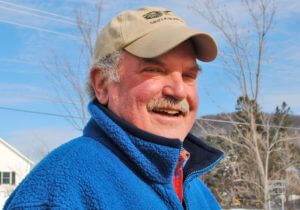Baseball beyond the diamond

By Edd Merritt
And a brand-new pair of shoes.
You know I think it’s time to give this game a ride
Just to hit the ball, and touch ‘em all, a moment in the sun
It’s a-gone and you can tell that one good-bye
~ John Fogarty, “Centerfield”
When I first contemplated a theme for this OutTake my mind happened to be on religion and how, despite its philosophy and otherworldly set of beliefs and beings, it was all established by humans to explain what we do not understand through data. In other words, religion is man-made, not heavenly dropped.
Well, that seemed a bit heavy handed, so, naturally, I switched to baseball. Don’t laugh. You probably thought baseball is all about throwing pitches, fielding grounders and swinging bats. Well, think again—or read Emily Nemens’ The Cactus League (Farrar, Straus and Giroux, 2020). Although she bills it a novel, it couples real and created players into, as author Chris Batchelder describes it, a “complex ecosystem of professional sport.” We’ve got the game and its players, but we also have lovers and losers and wives and announcers and all sorts of people off the diamond who are affected by what happens in leagues at all levels. The diamond is a type of jewel around which a number of peoples’ lives revolve.
As someone whose life has often circled around sports, I have drifted out of the loop xfor a variety of reasons—age, physical maladies, a dislike for the professionalism that so often creeps into what began as a game worth the pleasure of playing for its natural competitiveness and has developed into a competition among owners—and players, measured more by financial gain than by sheer love of the sport.
While the game calls its heartland a plate, a diamond and an outfield, owners and those connected by things other than bats and balls call what’s beyond the fences their places of play. They and others connected to the players find themselves often in spots that seem to put ballparks somewhere below the horizon. Nemens shares with the reader what is going on in their minds while their husbands, boyfriends, other types of relatives—many beyond the outfield—and all of whom seem to be having their minds on things well outside of baseball.
The players, on the other hand, are focusing on the sport while this extracurricular activity is going on. The speed of their fast balls, how deep to dig in at home plate, where to position yourself best for pull hitters, how to make that curve ball cut at the right spot before the plate, how to wait for just the right pitch.
I won’t forget one of my early baseball impressions as I sat in the stands watching my hometown Rochester Royals who played in the Southern Minnesota League (the Southern Minny we called it). I caught a historical event as Bill “Moose” Skowron of the rival Austin Packers (Austin being the hometown of Hormel Meat packers) hit three home runs in the one game, a feat that earned him a contract offer from the New York Yankees for whom he starred for a number of years—talk about going from dinky to dandy.
Rather than follow him physically to the big leagues, Moose’s Austin friends likely continued doing their hay baling and cow milking as though Yankee Stadium had no silo or barn with a loft. Pork prices fell well short of what Moose was paid in pinstripes.
The summer duty of my son’s sister-in-law played to Ms. Nemens’ ecosystem for several of her college years. Living on the north side of Chicago, she took a job selling hot dogs at Wrigley Field. Each succeeding summer she would be moved to a section of the ballpark with higher attendance and, consequently, closer to the game. Baseball, hot dogs and college tuition—it all came together with the sport at its fulcrum. I dared not ask her what she thought of a particular game. I knew I’d hear, “Huh? What game?”
Apparently, Scottsdale, Arizona, got its Wrigley Field near the turn of the 20th century. It took that long a time before baseball landed just above the Saguaro Cactus. A group of Baltimore businessmen bought the team that then hunkered in St. Louis as the Brewers and said, “From now on, you’re the birds, and you’re headed west.” However, as the Orioles, they, of course, plunked a baseball stadium in the center of Scottsdale because, after all, what good is a city without baseball—little good, of course. The novel’s Cactus League was where future major leaguers warmed up, where their chances for making “the bigs” were assessed, and Scottsdale became its hub.
Once the stadium is in place, we move on to the players, and as Abbott and Costello told us, we learn that “Who’s” on First, “What’s” on second and “I Don’t Know” is on third—a wordsmith might call them bases for jokes (bases, get it?).
Then look across the country and what do you see—well, the Bronx Bomber and Yankee Stadium. In the 1960s author and New York journalist, Pete Hamill, turned his weekly column melodious writing about “The News that Counts.” In it he proclaimed that he was tired of hearing all about the metropolitan woes of New York. After all, what really counted for its citizens was the fact that “it was September, and the Mets were leading the league.”

